Rethinking Advertising in Saudi Arabia
ADVERTISING
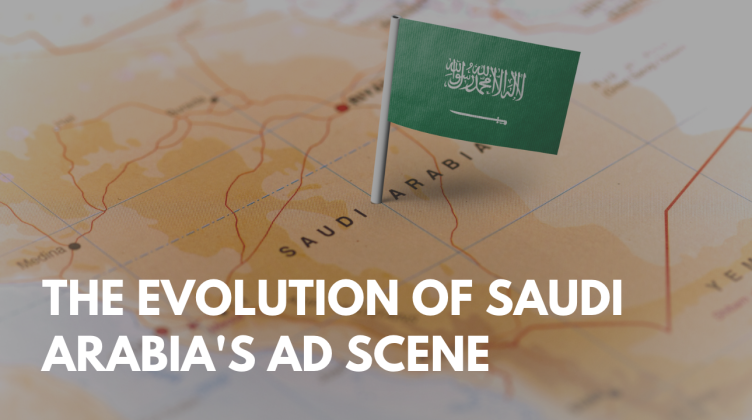

Saudi Arabia has witnessed a significant transformation since 2015, not just in the advertising industry but across various sectors as the country embraces modernisation and a more global outlook. The advertising landscape, once dominated by traditional methods, has shifted dramatically under MBS's leadership. This shift has paved the way for new opportunities in digital advertising, international brand involvement, and a more inclusive and forward-thinking society.
Old School Ads and Saudi Arabia's Ad Scene Pre-MBS
Before MBS took the reins, the advertising industry in Saudi Arabia was kinda stuck in the past. You know, when newspapers, magazines, and TV commercials were all the rage. Even with the rise of digital, social media advertising was barely a blip on the radar. As for international brands, they had to go through some serious hoops just to get a green light for their ads.
And don't even get me started on how tricky it was to adapt those ads to the local market, with all the religious, cultural, and linguistic barriers. Digital advertising? Yeah, that was pretty scarce. And the ladies of the ad world? Sadly, they were mostly pushed to the sidelines.
Rememebr in 2012 when IKEA removed images of women & girls from the Saudi version of its catalogue?


Let's look at how things used to be in more detail:
Old school advertising ruled: Saudi Arabia's ad game was all about traditional media due to multiple reasons like:
Newspapers, magazines, and TV, were often seen as more reliable and trustworthy sources of information compared to newer digital platforms. Older generations were also more accustomed to consuming content on the traditional channels, therefore advertisers chose to focus on those.
The government had tight control over media and advertising, which made it harder for newer advertising platforms, like social media, to take off quickly.
Conservative society that made it difficult for new and unconventional advertising methods to gain traction, as they could be perceived as challenging the established norms.
Saudi Arabia has a different logo for Starbucks (with no mermaid hair showing)!

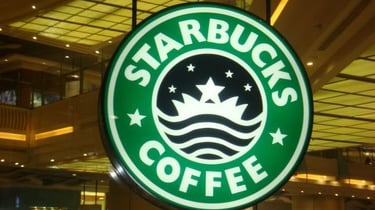
So, pre-MBS Saudi Arabia was a bit of a tough nut to crack when it came to brand's communications. But things change, right?
Revamped and Ready – Advertising in Saudi Arabia Post-MBS
Fast forward to the MBS era, and it's like someone hit the refresh button on the Saudi ad scene. With the rise of the internet and a push for modernisation, the advertising landscape has done a total 180. Let's check out how things are shaking up in the post-MBS era:
Digital revolution: social media and digital ads are finally having their moment in the spotlight. According to Ipsos, Saudi had the highest spending on digital advertising in the Middle East and North Africa (MENA) in 2021, at around 950 million U.S. dollars. From Instagram influencers to YouTube campaigns, Saudi advertisers are embracing the digital age, and it's about time!
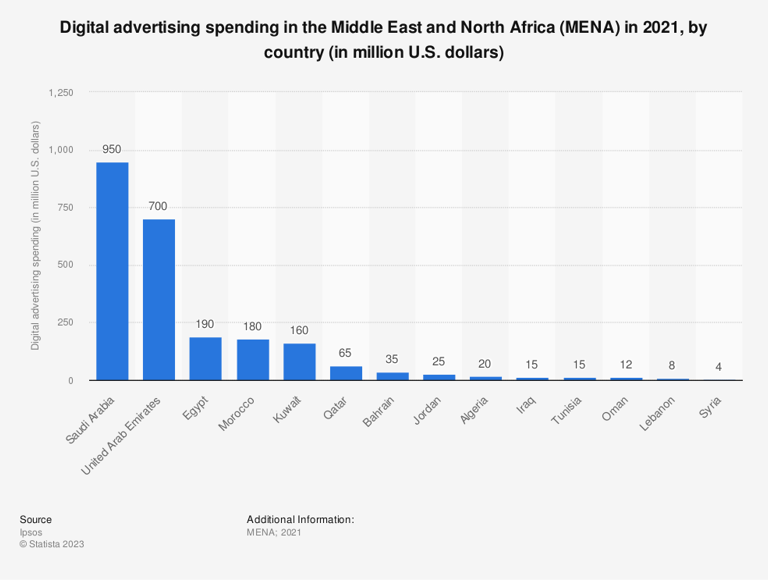

Introduction of a new program known as “Mawthooq” – meaning “trustworthy” or “verified” – which aims to regulate the commercial activity of influencers. Every Saudi and non-Saudi content creator in the Kingdom who earns revenue through advertising on social media must first apply for an official permit. Saudis residing outside of the Kingdom should also apply to get the permit. While Mawthooq program aims to put regulations in place, it is arguably being used for censorship and controlling online free speech.
International brands: thanks to a more open market and relaxed regulations nowadays, global companies are getting their ads approved easier. The door's wide open now!! Some of the main changes:
Less cultural and religious sensitivities: while it's still essential to respect Saudi Arabia's cultural and religious norms, there's more flexibility in advertising now. Brands can explore creative ways to tailor their ads while still adhering to the country's values.
Reduced bureaucracy: easier check and approval process - the government has streamlined processes for international businesses, cutting down on red tape and making it easier for them to operate within the country.
More open market: with the government's efforts to diversify the economy and attract foreign investment.
Easier collaboration with local partners: international brands can now more easily collaborate with local partners, agencies, and talent, fostering a more inclusive and innovative advertising landscape.
Now, let's take a look at a couple of examples of brands that have successfully adapted to these changes: Raffaello & Nike. Of course, Nike and Raffaello are just the tip of the iceberg. There are many more brands exploring innovative and creative approaches tailored to the country. It's definitely an exciting moment in Saudi Arabia's advertising scene!


Women in the ad world: ladies, it's time to shine! Female marketers are stepping up and taking on more prominent roles in the industry.
A whole new (ad) world: With the government pushing for economic diversification and a more tech-savvy younger generation, the advertising industry is booming like never before.
The emergence of a more modern, forward-thinking society has led to increased openness to new and innovative marketing techniques. The growth of social media has allowed marketers to target a younger demographic that is more tech-savvy. The government has also taken steps to attract more foreign investment in the country, providing a significant boost to the advertising industry.
Saudi Arabia's advertising game has truly stepped up, and it's a sight to behold. We're seeing a blend of creativity, inclusivity, and innovation that's reshaping the industry. For marketers eager to make their mark in this landscape, adapting is crucial. Remember, it's essential to grasp the local culture, religious customs, and the balance between time-tested and cutting-edge ad techniques. Plus, it's vital to connect with the increasingly young and tech-savvy audience. The transformation of Saudi Arabia's business and advertising landscape presents both opportunities and challenges.
To successfully navigate this evolving market, staying updated on local market nuances and embracing change are key. On that note, I'll leave you with some insightful findings from January 2023 - feel free to get in touch if you'd like to discuss this article.
Check the full report here
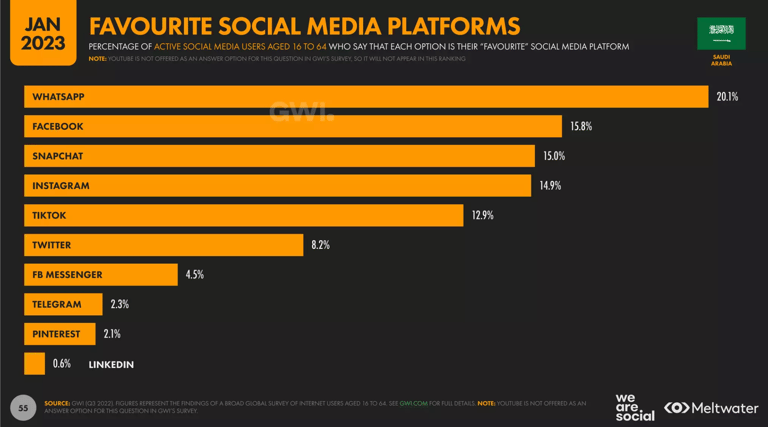

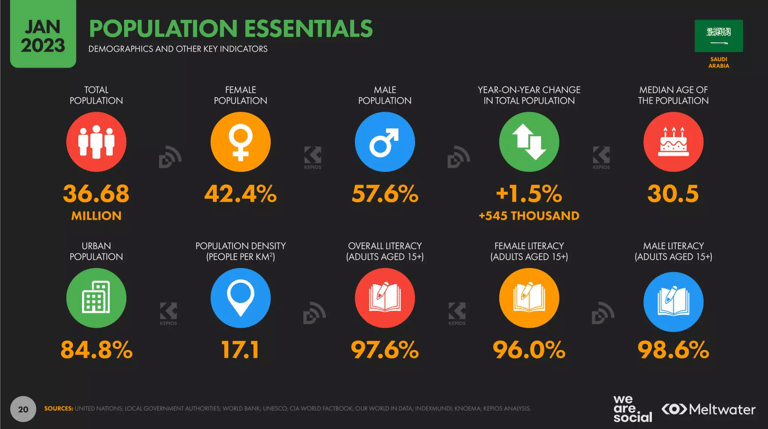
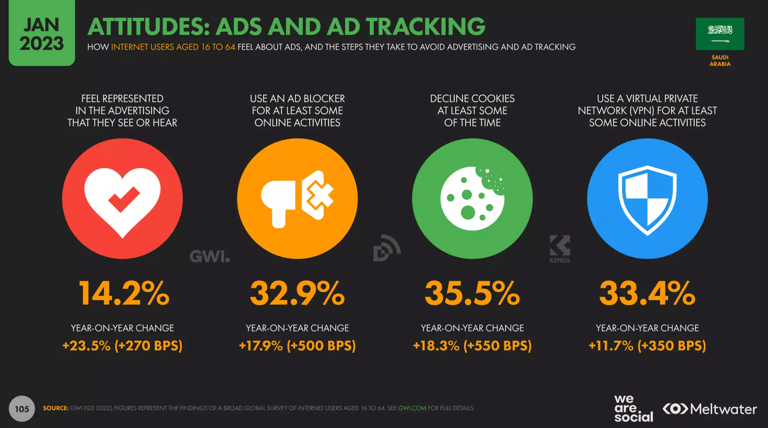
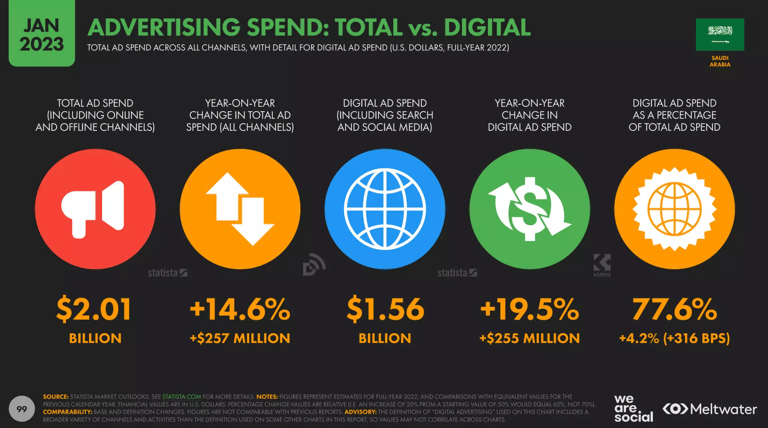

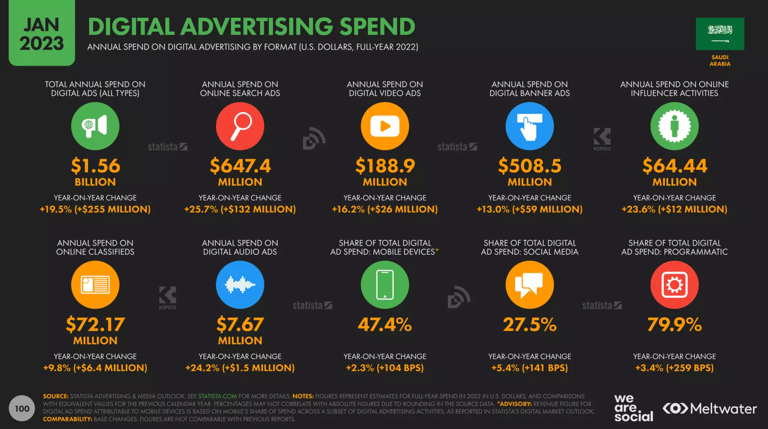





Culture clash: Navigating the local market was no joke. Adapting ads for Saudi Arabia meant overcoming religious, linguistic, and cultural hurdles, making the process quite challenging. For example, translating catchy slogans into Arabic while maintaining their original meaning and appeal could be a real headache. Many international brands were forced to completely remove women from their communications when sent to Saudi Arabia, check IKEA's catalogue. Ads for beauty supplies, supports products such as bras, though only sold in designated stores with covered windows are also subject to censorship.
Digital desert: with limited opportunities and prevailing cencorship for online use, marketers struggled to get their message across digital channels.
Gender disparity: female marketers got the short end of the stick in this era. They were pretty much sidelined, with limited chances to make their mark in the industry.
